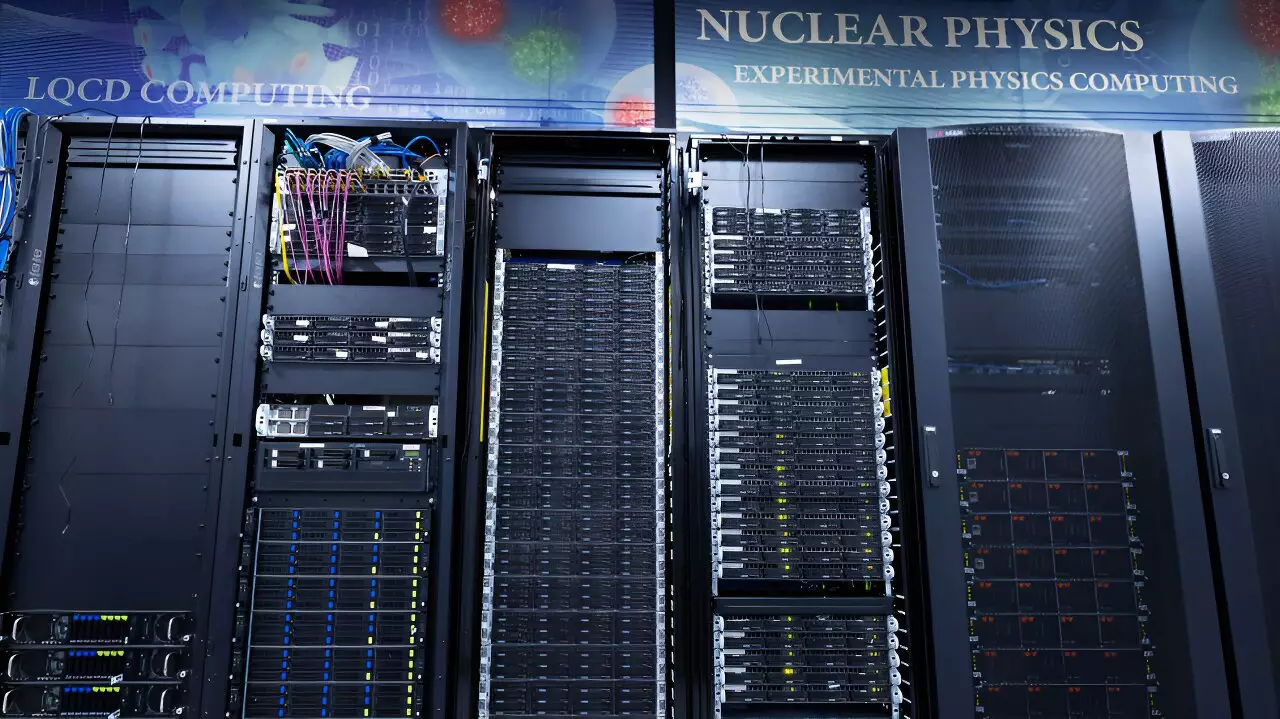The world of particle physics is often perceived as a realm of indiscernible minutiae, where the fundamental constituents of matter reveal an impressive complexity. Hadrons, which can be readily identified as protons and neutrons, serve as the elementary building blocks of atomic nuclei. However, beneath the seemingly impenetrable surface of these particles lies a dynamic arena governed by a chaotic interplay of quarks and gluons—collectively termed partons. Recent initiatives by the HadStruc Collaboration, a consortium of nuclear physicists, have set out to unravel the intricate interactions among these partons and develop a comprehensive map detailing their distributions and dynamics in hadrons.
With a base at the U.S. Department of Energy’s Thomas Jefferson National Accelerator Facility (JLab), the collaborative team consists of researchers from various institutions, including Old Dominion University and the College of William & Mary. Together, they strive to advance theoretical models that describe the behavior of these fundamental particles. Their recent publication in the *Journal of High Energy Physics* encapsulates pivotal insights into hadronic structure through the lens of lattice quantum chromodynamics (QCD).
Central to the HadStruc Collaboration’s endeavors is the exploration of generalized parton distributions (GPDs). In contrast to one-dimensional parton distribution functions (PDFs), GPDs present a multi-faceted view of hadronic structure, facilitating a deeper understanding of phenomena such as the origin of the proton’s spin. Joseph Karpie, a prominent figure in the collaboration, emphasizes that GPDs yield a far more intricate understanding of how quarks and gluons work synchronously within protons.
The conventional understanding posits that protons comprise two up quarks and one down quark. Yet, what happens within the proton’s confines is far more complex, as the ensuing interactions among these quarks, driven by the strong force, give birth to a dynamic sea of transient quark-antiquark pairs. This sea plays a crucial role in defining the overall structure and spin of the proton, an area where past experimental data has proven enigmatic. Notably, an experiment conducted in 1987 revealed that quark spin accounts for less than half of the proton’s total spin—a gap that hints at the substantial influence of gluons and orbital angular momentum.
In pursuit of a clearer understanding of hadronic mechanics, the HadStruc team delves into energy-momentum tensors. Such tensors are pivotal in elucidating how energy and momentum are distributed within a proton, impacting how it interacts with gravitational forces and other fundamental dynamics. As explained by physicist Hervé Dutrieux, while the group is currently focusing on matter distribution, their research holds promise for broader applications.
To validate their innovative GPD framework, the HadStruc researchers engaged in extensive simulations—counting as many as 65,000 analyses on supercomputers. Utilizing high-performance computing facilities such as the Frontera supercomputer, the researchers were able to run simulations on protons across varied momenta and complex environments filled with gluons. The results not only demonstrate the viability of their theory but mark a milestone achievement in the ongoing quest to map out hadron structure through advanced computational techniques.
The work of the HadStruc Collaboration seeks to synchronize theoretical advancements with experimental frameworks, with particular attention placed on upcoming high-energy experiments. Just as the new methodologies yielded promising insights, collaborative efforts at facilities like Jefferson Lab are expected to deepen the understanding of hadronic interactions. As the collaboration gears up for further studies, they are keen on leveraging their findings in experiments to be conducted at the forthcoming Electron-Ion Collider (EIC) at Brookhaven National Laboratory. This facility aims to push the boundaries of how deeply researchers can probe hadronic structures, potentially revealing unprecedented details.
The commitment of the HadStruc Collaboration to bridging theoretical and experimental realms indicates a fresh paradigm in the understanding of particle physics. Karpie’s assertion that “QCD has always lagged behind experiments” speaks to the motivation driving this consortium. They aim not only to remain relevant in a rapidly evolving field but also to spearhead inquiries that precede empirical validation, thus transforming the landscape of theoretical particle physics.
The HadStruc Collaboration exemplifies an impressive intersection of theory, computation, and experiment in the field of particle physics. As they persevere through nuanced calculations and innovative methodologies, the implications of their work on hadronic structure promise to significantly enhance our grasp of the fundamental workings of matter itself.

